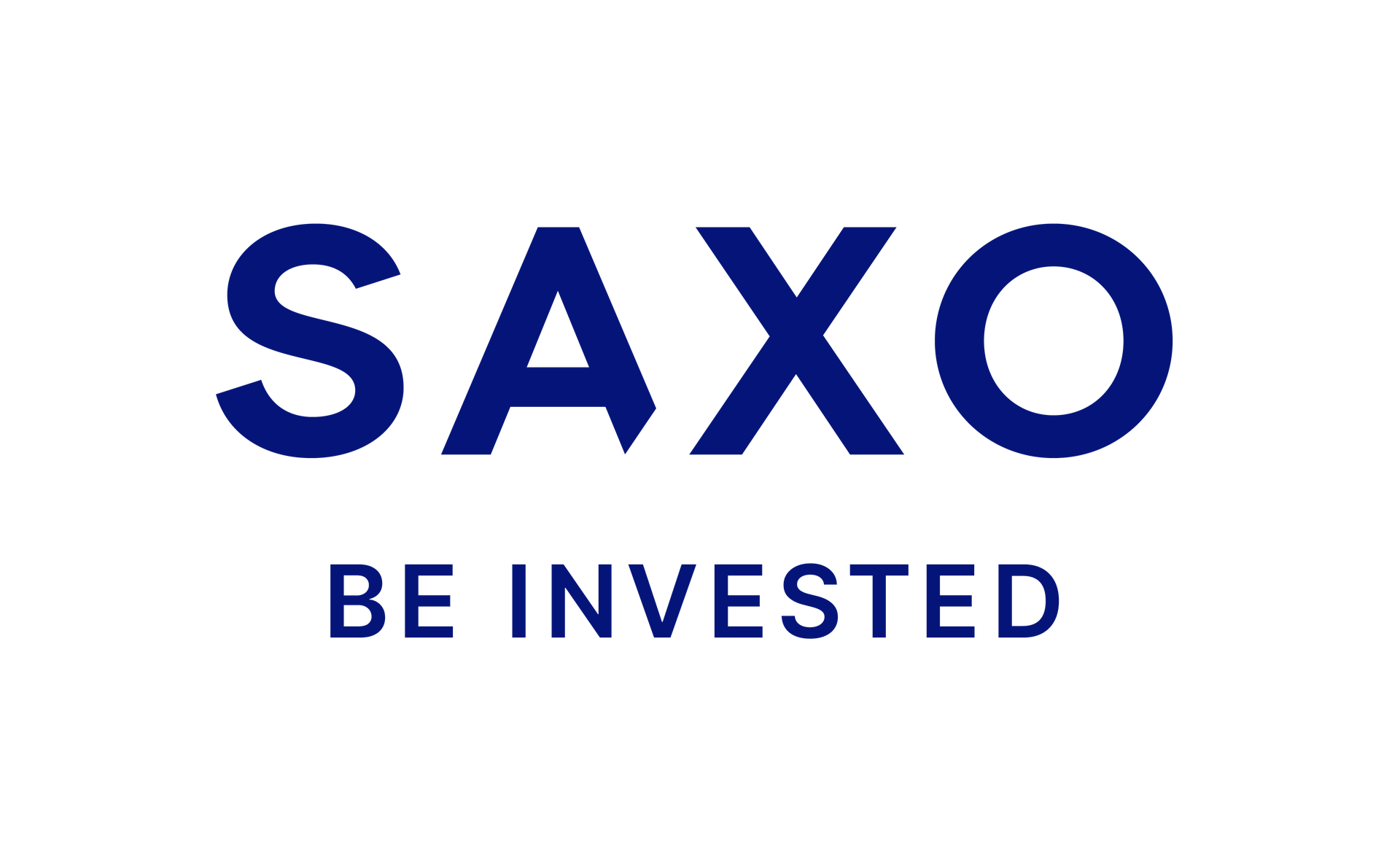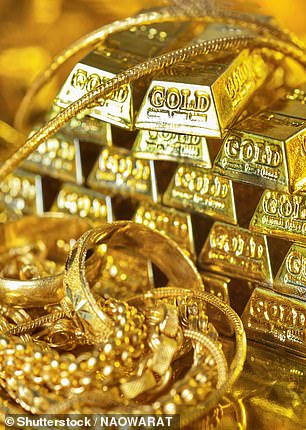
Physical gold: Demand can be seasonal, such as for the festival of Diwali in India, and the Lunar New Year in China
The gold price hit a record high of $2,531.60 an ounce on Tuesday on anticipation of a run of US interest rate cuts before the end of this year.
The prospect has excited ‘goldbugs’, who are perpetually bullish about the precious metal.
More sceptical investors are also alert to gold buying opportunities after a jump in its value of more than a fifth since January.
Bitcoin might have dominated the headlines for years, but gold still has the power to grab attention, especially when the powerful US central bank is about to kick off a rate-cutting cycle.
You certainly don’t need to be a ‘goldbug’ to recognise the advantages of holding it within a well-balanced portfolio.
The precious metal is a store of wealth and hedge against inflation, a useful way to diversify and a safe haven asset during financial and political upsets.
You need to be clear-eyed though because gold generates no income and the price can be volatile, with many drivers that can act in concert or be in conflict, and hold weaker or more dominant sway at any one time.
Sometimes the price can end up in a tug of war between opposing forces.
A few years ago, the US Federal Reserve had started hiking interest rates which dampened demand for gold, but inflation and roiling stock markets were still supporting the price.
The following factors or others can be influential.
Physical gold purchases: Demand for coins, bars and jewellery, which can be seasonal. For example, the festival of Diwali is a popular time to buy gold jewellery in India, and so is the Lunar New Year in China for all types of physical gold.
Expectations of inflation and future interest rate decisions: Moves by the world’s most powerful central bank, the US Federal Reserve, are the most important.
Rate cuts, or merely anticipation of them, make gold more attractive to investors as they weaken the dollar and can fuel inflation.
A strong market consensus on what a determined Fed is going to do next can trump a number of opposing drivers of the gold price combined.
Central bank purchases: Many like to hold gold and have deep pockets, though some are believed to conduct their operations under the radar – see below.

Gold price: Investors have seen a gain in value of more than a fifth since January (Source: BullionVault)
Mystery buyers: In recent years, there has been much speculation that covert trading activity has influenced the gold price.
The main suspects are the Chinese or the Russian central bank, or maybe both.
The invasion of Ukraine led to sanctions against Russia, which has the world’s second largest gold mining industry.
Meanwhile, there is conjecture that China is under-reporting its central bank gold reserves, possibly because it is building a warchest against Western sanctions should it invade Taiwan.
The US can prevent sanctioned countries clearing dollars through its financial system.
Less powerful countries than China or Russia might also be inclined to build gold reserves on the quiet to bolster their financial position should they get on the wrong side of Washington and the West.
The US dollar: A strong dollar makes gold more expensive and this can deter all types of buyers and weigh on the price.
This is because it is denominated in the US currency, so when the dollar is strong it can price out overseas buyers. Conversely, a weaker dollar may help boost the gold price.
Geopolitical events and crises: Gold is considered a safe haven in times of trouble. However, so is the dollar, which can also strengthen during periods of turmoil, so these two trading trends sometimes work against each other.
Institutional investor and hedge fund plays: Even when demand for physical gold is strong, it can be offset by volatility in ‘paper gold’, in the form of exchange-traded funds held by institutional players like banks and hedge funds.
Two decades of gold prices in dollars

Source: BullionVault
When it comes to recent price trends, Ben Seager-Scott, chief investment officer at finance consultant Forvis Mazars, said: ‘Investors are clearly still attracted to gold, probably due to its traditional role as a perceived safe haven, particularly given the volatility we’ve seen over the recent weeks and increased geopolitical concerns.
‘It has been a little surprising that gold has continued to curry favour as a non-yielding asset given where interest rates are, but with cuts on the horizon, this could be stimulating fresh demand.’
Adrian Ash, director of research at online gold service BullionVault, said previous gold price records have also coincided with the height of the summer season – in August 2011 and 2020 – when trading desks are emptied for the holidays.

Adrian Ash: The risk of economic recession plus today’s continued geopolitical violence is likely to strengthen investor demand for bullion
But he said: ‘Rather than fighting a crisis from the beach, traders are this time bidding up shares and bonds as well as gold in expectation of the US Fed cutting interest rates from today’s two-decade highs.’
Ash revealed that since last weekend, BullionVault clients have seized on gold’s new highs to bank gains.
Nevertheless, he thinks lower interest rates will support gold’s new record prices as well as the stock market.
‘The risk of economic recession plus today’s continued geopolitical violence is likely to strengthen investor demand for bullion alongside the record pace of purchases by Asian and other emerging market central banks,’ he pointed out.
When it comes to how investors can make use of precious metals within a balanced portfolio, Sheridan Admans, head of fund selection at investment platform Tillit, said: ‘Gold and silver can often be good portfolio diversifiers with weak correlations to stocks, bonds, and other commodities.
‘However, gold is considered a better diversifier of the two. Silver’s correlation to industrial demand can see its supply and demand factors change dramatically depending on the market backdrop.’
Admans said for investors who flock to precious metals as a safe haven in periods of uncertainty, the fact that it is a physical asset can be reassuring even if you are buying via a fund.
‘Historically, gold and silver have provided a reliable hedge against inflation and have performed well during periods of US dollar weakness,’ he added.
‘However, investors should be cautious. There is no such thing as a free lunch. Whilst gold and silver can provide an element of protection within the portfolio, they pay no yield and can be highly volatile in terms of price.
‘It is generally recommended to cap your exposure to precious metals to say, 5 per cent or 10 per cent.’
Admans tips the following precious metal funds – also, check our guide to investing in gold, which has further recommendations.

Sheridan Admans: Gold and silver can often be good portfolio diversifiers with weak correlations to stocks, bonds, and other commodities
Hanetf The Royal Mint Responsibly Sourced Physical Gold ETC (Ongoing charge: 0.25 per cent)
Passive alternative asset fund providing exposure to gold, without you having to physically own the precious metal directly, writes Admans.
It’s a responsibly sourced, lower carbon, physical gold product that keeps investors’ gold holdings in allocated accounts in the vaults at the Royal Mint.
Because the Royal Mint holds custody of the gold in this fund, it’s held outside the commercial banking system, providing some security to investors against a systemic failure.
Jupiter Gold & Silver (Ongoing charge: 0.92 per cent)
Fund investing solely in gold and silver via equities and bullion, accessed through physical gold or silver Exchange Traded Commodities.
The makeup of the fund varies depending on how bullish or bearish the manager is. In general, if the manager has a bullish outlook, the fund will hold significantly more in equities than bullion and a fairly equal split between gold and silver.
Whereas if the manager has a bearish outlook, the fund tends to hold a fairly equal split between equities and bullion, and the weighting to gold tends to be higher.
Most precious metal funds focus on gold mining companies. The silver and bullion factors, alongside the overall flexibility, make this fund quite unusual.
DIY INVESTING PLATFORMS

AJ Bell

AJ Bell
Easy investing and ready-made portfolios

Hargreaves Lansdown

Hargreaves Lansdown
Free fund dealing and investment ideas

interactive investor

interactive investor
Flat-fee investing from £4.99 per month

Saxo

Saxo
Get £200 back in trading fees
Trading 212
Trading 212
Free dealing and no account fee
Affiliate links: If you take out a product This is Money may earn a commission. These deals are chosen by our editorial team, as we think they are worth highlighting. This does not affect our editorial independence.
Some links in this article may be affiliate links. If you click on them we may earn a small commission. That helps us fund This Is Money, and keep it free to use. We do not write articles to promote products. We do not allow any commercial relationship to affect our editorial independence.
This article was originally published by a www.dailymail.co.uk . Read the Original article here. .


